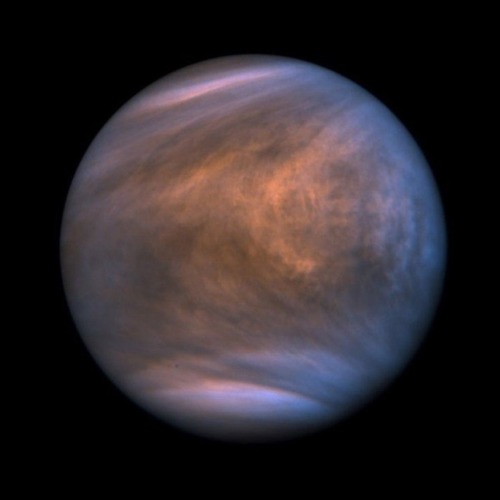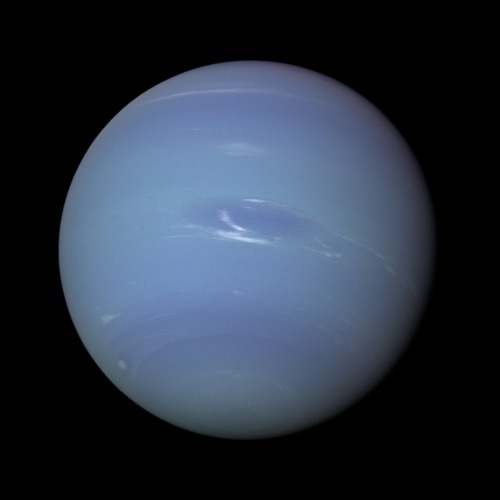“Black Hole,” Poem Assembled From Quotations From Wikipedia Articles










“Black Hole,” poem assembled from quotations from Wikipedia articles
More Posts from Of-finite-jurisdiction and Others




Rings of Gas Giants
l Uranus (Chandra) l Neptune, Jupiter (Webb) l Saturn (Cassini)

oh okay. heart steps right out of my chest and falls down the stairs
A Dusty Fingerprint in Space

A new image from NASA's James Webb Space Telescope reveals a remarkable cosmic sight: at least 17 concentric dust rings emanating from a pair of stars. Just 5,300 light-years from Earth, the star duo are collectively known as Wolf-Rayet 140. Each ring was created when the two stars came close together and their stellar winds (streams of gas they blow into space) collided so forcefully that some of the gas was compressed into dust. The stars' orbits bring them together about once every eight years, and forms a half-shell of dust that looks like a ring from our perspective. Like a cosmic fingerprint, the 17 rings reveal more than a century of stellar interactions—and the "fingerprint" belonging to Wolf-Rayet 140 may be equally unique. Other Wolf-Rayet stars produce dust, but no other pair are known to produce rings quite like Wolf-Rayet 140.
Learn more about Wolf-Rayet 140.
Make sure to follow us on Tumblr for your regular dose of space!

Jupiter Rotates : Observe the graceful twirl of our Solar System’s largest planet. Many interesting features of Jupiter’s enigmatic atmosphere, including dark belts and light zones, can be followed in detail. A careful inspection will reveal that different cloud layers rotate at slightly different speeds. The famous Great Red Spot is not visible at first – but soon rotates into view. Other smaller storm systems occasionally appear. As large as Jupiter is, it rotates in only 10 hours. Our small Earth, by comparison, takes 24 hours to complete a spin cycle. The featured high-resolution time-lapse video was captured over five nights earlier this month by a mid-sized telescope on an apartment balcony in Paris, France. Since hydrogen and helium gas are colorless, and those elements compose most of Jupiter’s expansive atmosphere, what trace elements create the observed colors of Jupiter’s clouds remains a topic of research. via NASA

Space Station Silhouette on the Moon : What’s that unusual spot on the Moon? It’s the International Space Station. Using precise timing, the Earth-orbiting space platform was photographed in front of a partially lit gibbous Moon last month. The featured composite, taken from Payson, Arizona, USA last month, was intricately composed by combining, in part, many 1/2000-second images from a video of the ISS crossing the Moon. A close inspection of this unusually crisp ISS silhouette will reveal the outlines of numerous solar panels and trusses. The bright crater Tycho is visible on the upper left, as well as comparatively rough, light colored terrain known as highlands, and relatively smooth, dark colored areas known as maria. On-line tools can tell you when the International Space Station will be visible from your area. via NASA

Clearest image ever taken of Venus.
source: https://photojournal.jpl.nasa.gov/targetFamily/venus
how I sleep at night knowing there are stars and planets and galaxies above my roof

![Screenshot from nebula Wikipedia page: The "Pillars of Creation" from the Eagle Nebula. Evidence from the Spitzer Space Telescope suggests that the pillars may already have been destroyed by a supernova explosion, but the light showing us the destruction will not reach the Earth for another millennium.[1]](https://64.media.tumblr.com/b10fae13b89258a4bbd4b2cd7cf10646/939e648398194b92-95/s500x750/dd77cb9b6f24b0eaca6ca04b691a327c71641d09.jpg)
btw . insane little wikipedia caption for everyone’s consideration also
the new composite james webb image is so beautiful ive been staring at it for 10 minutes straight

featuring jupiters rings, europa (along with a bunch of other moons), the northern and southern auroras, and the great red spot



Venus, Callisto (Jupiter’s moon), Neptune
-
 iconocat liked this · 2 weeks ago
iconocat liked this · 2 weeks ago -
 henryviiicutupwhiletalking reblogged this · 2 weeks ago
henryviiicutupwhiletalking reblogged this · 2 weeks ago -
 seabhacs liked this · 2 weeks ago
seabhacs liked this · 2 weeks ago -
 lechevaletrange liked this · 2 weeks ago
lechevaletrange liked this · 2 weeks ago -
 ashes11aa reblogged this · 2 weeks ago
ashes11aa reblogged this · 2 weeks ago -
 ashes11aa liked this · 2 weeks ago
ashes11aa liked this · 2 weeks ago -
 myhousedotwad liked this · 2 weeks ago
myhousedotwad liked this · 2 weeks ago -
 hypnostases liked this · 2 weeks ago
hypnostases liked this · 2 weeks ago -
 oceancoloredfoodflavoring reblogged this · 3 weeks ago
oceancoloredfoodflavoring reblogged this · 3 weeks ago -
 oceancoloredfoodflavoring liked this · 3 weeks ago
oceancoloredfoodflavoring liked this · 3 weeks ago -
 dollarstorewondersmith liked this · 3 weeks ago
dollarstorewondersmith liked this · 3 weeks ago -
 frozen-antifreeze reblogged this · 3 weeks ago
frozen-antifreeze reblogged this · 3 weeks ago -
 frozen-antifreeze liked this · 3 weeks ago
frozen-antifreeze liked this · 3 weeks ago -
 harxu liked this · 4 weeks ago
harxu liked this · 4 weeks ago -
 solisandra liked this · 1 month ago
solisandra liked this · 1 month ago -
 aerscribbles reblogged this · 1 month ago
aerscribbles reblogged this · 1 month ago -
 hiddeninapineapple reblogged this · 1 month ago
hiddeninapineapple reblogged this · 1 month ago -
 altars-of-apostasy liked this · 1 month ago
altars-of-apostasy liked this · 1 month ago -
 lettuce-on-toast liked this · 1 month ago
lettuce-on-toast liked this · 1 month ago -
 melismasthmatic liked this · 1 month ago
melismasthmatic liked this · 1 month ago -
 vertebratee liked this · 1 month ago
vertebratee liked this · 1 month ago -
 tempsvol3 reblogged this · 1 month ago
tempsvol3 reblogged this · 1 month ago -
 horsehate reblogged this · 1 month ago
horsehate reblogged this · 1 month ago -
 basic-white-girl-name liked this · 1 month ago
basic-white-girl-name liked this · 1 month ago -
 jadebread64 reblogged this · 1 month ago
jadebread64 reblogged this · 1 month ago -
 jadebread64 liked this · 1 month ago
jadebread64 liked this · 1 month ago -
 wabbitears liked this · 1 month ago
wabbitears liked this · 1 month ago -
 ossumsauce reblogged this · 1 month ago
ossumsauce reblogged this · 1 month ago -
 ossumsauce liked this · 1 month ago
ossumsauce liked this · 1 month ago -
 phogay reblogged this · 1 month ago
phogay reblogged this · 1 month ago -
 bluecapsicum liked this · 1 month ago
bluecapsicum liked this · 1 month ago -
 thehardrive liked this · 1 month ago
thehardrive liked this · 1 month ago -
 temporesaori liked this · 1 month ago
temporesaori liked this · 1 month ago -
 highqualityduck liked this · 1 month ago
highqualityduck liked this · 1 month ago -
 thecryptchick liked this · 1 month ago
thecryptchick liked this · 1 month ago -
 superoxide liked this · 2 months ago
superoxide liked this · 2 months ago -
 minicloudflower liked this · 2 months ago
minicloudflower liked this · 2 months ago -
 mythicandco reblogged this · 2 months ago
mythicandco reblogged this · 2 months ago -
 mythicandco liked this · 2 months ago
mythicandco liked this · 2 months ago -
 stormco0l reblogged this · 2 months ago
stormco0l reblogged this · 2 months ago -
 sammusbird liked this · 2 months ago
sammusbird liked this · 2 months ago -
 deme-real-life reblogged this · 2 months ago
deme-real-life reblogged this · 2 months ago -
 dogbisexual liked this · 2 months ago
dogbisexual liked this · 2 months ago -
 legendfinder reblogged this · 2 months ago
legendfinder reblogged this · 2 months ago -
 legendfinder liked this · 2 months ago
legendfinder liked this · 2 months ago -
 madeline-the-bisexual-samurai reblogged this · 2 months ago
madeline-the-bisexual-samurai reblogged this · 2 months ago -
 astralikacastle liked this · 2 months ago
astralikacastle liked this · 2 months ago -
 wuackamole reblogged this · 2 months ago
wuackamole reblogged this · 2 months ago -
 catgirldragon reblogged this · 2 months ago
catgirldragon reblogged this · 2 months ago

Finn OFJ’s space blog. Do you love space?? you better. or else
39 posts